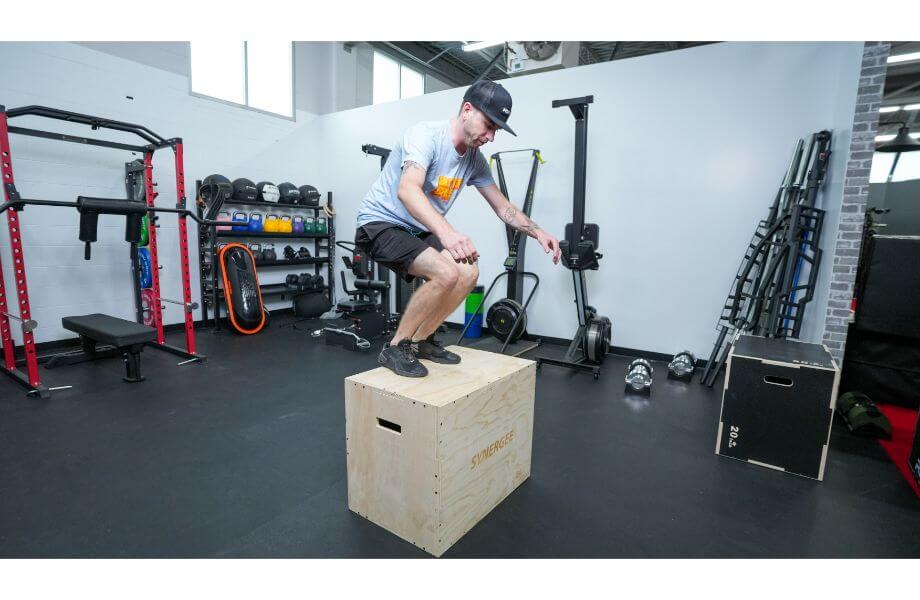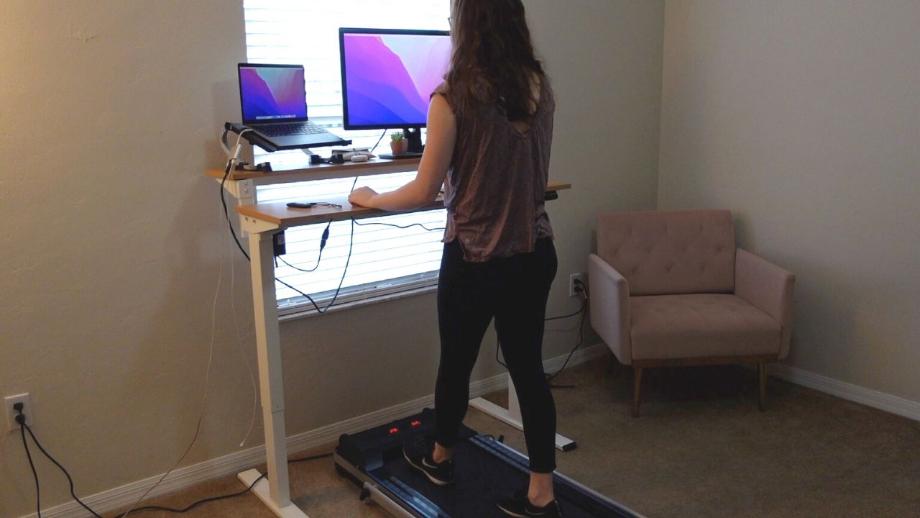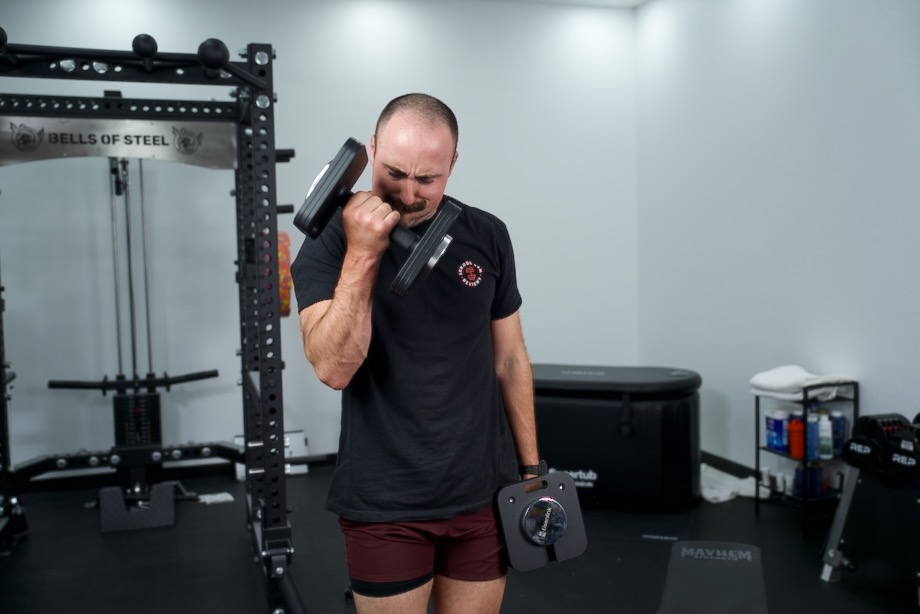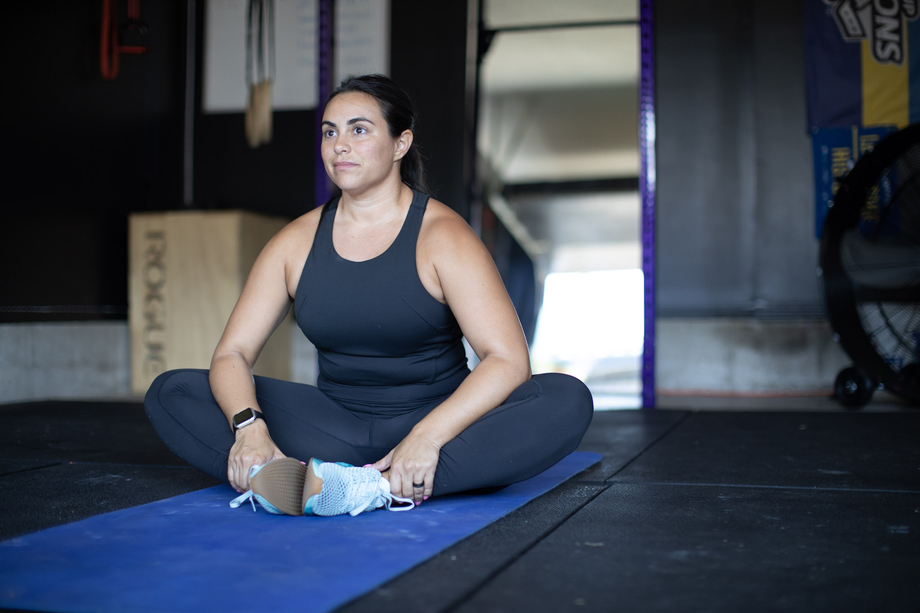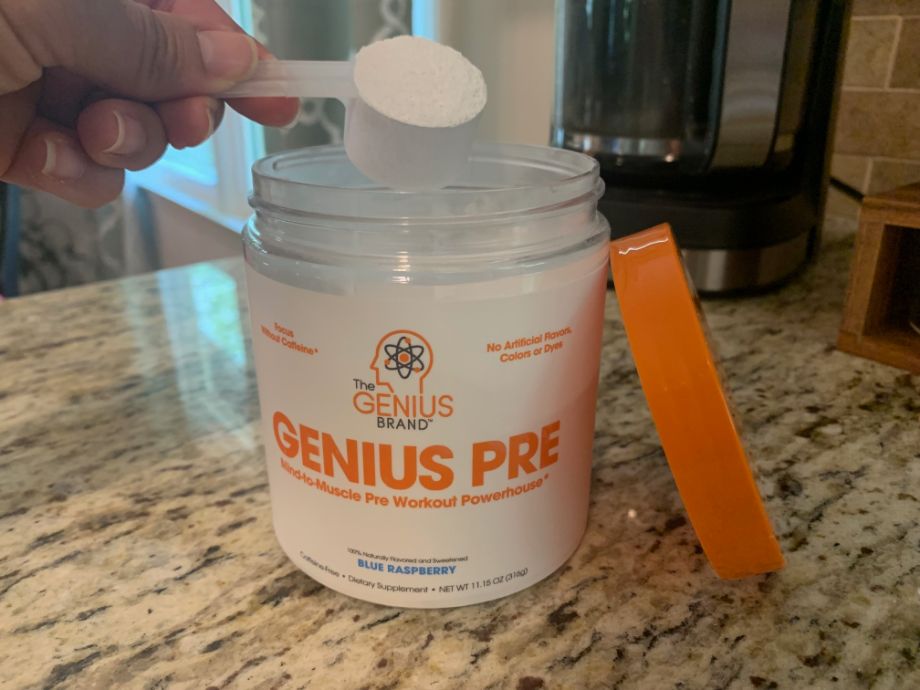Want to improve your broad jump? What about your deadlift? 400-meter sprint times? Increase your vertical jump height so you can crush the court at your next pick-up game?
Whatever your goal—even if it’s just to improve your general fitness level—you can use plyometrics in your workout routine to strengthen all muscle groups in ways you haven’t before.
Plyometric exercises are exercises that use speed and force to improve muscle power. What is power? Power equals force x acceleration (P = F x A). Think of force as a push or pull from the object’s interaction with another object, such as the pushing up during a push-up. Acceleration is the rate at which an object changes its speed.
Put force and acceleration together, and the magic and benefits of plyometric exercises come to light. And this ends your science lesson for today. Now we’ll dive into the benefits of plyometric exercise and seven of the best plyometric exercises to perform in your training.
Let’s jump in.
RELATED: A Complete Guide to Using Resistance Bands
Benefits of Plyometric Exercises
You have two types of muscle fibers: slow-twitch and fast-twitch. Slow-twitch fibers need oxygen, and fast-twitch muscle fibers don’t, according to research in the journal Sports1. (There’s much more to it than this, but we’re keeping things simplified here.)
Fast-twitch fibers have a bigger potential for muscle growth, and plyometric exercises target these fibers. That’s just one benefit of plyometric training, and here are a few more.
Improved Coordination
Plyometric exercises are one way to improve your kinesthetic awareness2, which is your ability to control and be aware of your body in space. Plyo exercises require you to recruit all the muscle fibers you possibly can, as quickly as possible, to perform a rep successfully. For example, when performing a clapping push-up, you need to know where your hands are in relation to the floor and get them back as quickly as possible to do another rep.
Better Cardiovascular Fitness
You’ll help improve your cardio fitness because lower-body plyometric exercises encourage the heart to pump more blood with each pump and return to your resting heart rate faster after exercise. Improving your cardiovascular fitness will improve your sports performance and your activities of daily living.
Increased Training Focus
Think of the moment before you jump on a box or clap your hands together during a clapping push-up—before your hands hit the ground before the next rep. That, my training friends, takes some guts and requires you to muster up everything you have and leap into the unknown.
What if you don’t get your hand down in time? What if you miss your box and slam your shins against plywood? OUCH. Plyometrics will increase your training focus because they will make you focus on the task at hand. A bit of fear in your training is healthy, anyway, amirite?
Improves Power and Strength
When performing plyometric exercises, you’ll be priming your muscles to move quickly, like going from 0 to 60 MPH in a car in a few seconds flat. When you perform plyos early and regularly in your training, you’ll notice the improved ability of your muscles to generate more force faster during your regular strength training session. Producing more power faster will help you jump higher, run faster, and improve your athletic performance. This type of power also translates to improved one-rep maxes in various lifts.
How to Do Plyo Exercises
Below is a guide on performing and developing explosive power with the seven best exercises for your plyometric workout. Before you know it, you’ll be jumping buildings with a single bound. (OK, not really, but you’ll feel like you can.)
For better performance, perform these exercises after your warmup and before your regular resistance training program. The high-intensity nature of these seven explosive movements requires you to be fresh and ready to go.
Jumping Lunges
Muscles Targeted: Quads, hamstrings, adductors, calves, and glutes
How to Do It:
- Set up in a split squat position.
- Bend both knees and descend until your back knee hovers above the ground.
- Explode with both feet, leaving the ground, and switch your legs mid-air.
- Land and immediately perform a jump lunge on the opposite leg.
- Keep alternating sides for even reps.
Trainer Tip: Jump training exercises like jump lunges challenge your single-leg balance, and if you begin to lose your balance, it is time to stop the set.
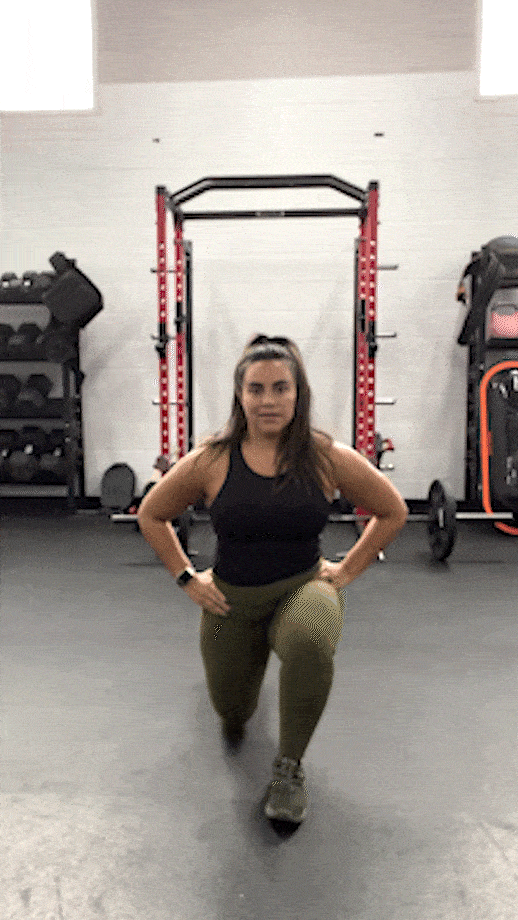
Squat Jumps
Muscles Targeted: Quads and glutes
How to Do It:
- Get into your squat stance with your feet in your preferred position.
- Squat down and bring your arms behind you.
- Explode up and raise your arms above your head to use the upper body to help propel you up.
- Land softly and immediately go back down into a squat and repeat.
Trainer Tip: You can perform for height or jump as quickly as possible. Using a pair of light dumbbells will help when you want to challenge yourself even further.
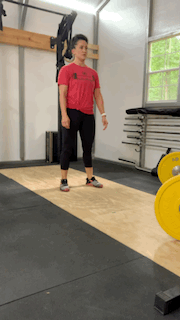
Skater Hops
Muscles Targeted: Calves, quads, adductors, and glutes
How to Do It:
- Stand upright with your hands by your sides and feet hip-width apart.
- Bring your right leg behind you and soften the left knee, which loads your left leg.
- Perform a lateral jump to the right as far as possible and stick the landing on your right foot.
- Bring your left foot behind, soften the right knee, and repeat.
- Alternate sides for even repetitions.
Trainer Tip: You can perform this exercise with a focus on speed or jump laterally as far as you can for each rep. Make sure to stick every jump or, if you miss a landing, reset to regain your balance before repeating.
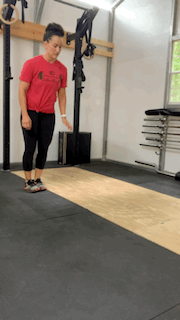
Box Jumps
Muscles Targeted: Hip flexors, quads, and glutes
How to Do It:
- Perform a quarter squat in front of your box and bring your hands behind you.
- Thrust your arms forward as you jump and land softly and safely on the box.
- Step down lightly off the box, return to the starting position, and repeat for reps.
Trainer Tip: Choose your box height carefully. It’s not the height that matters but your ability to do these quickly and safely. If you are a beginner, start with a smaller box until you can gain more confidence and strength.
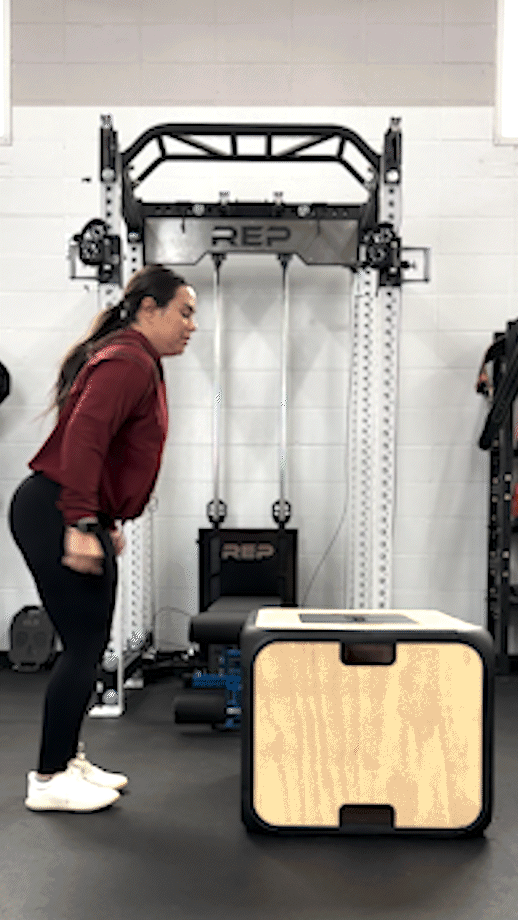
Tuck Jumps
Muscles Targeted: Hip flexors, quads, and glutes
How to Do It:
- Set up as you would for your bodyweight squat
- Drop down into a squat, jump up, and tuck your knees toward your chest.
- Land at the bottom of the squat and then stand up.
- Then reset and repeat.
Trainer Tip: Take your time to set up your next tuck jump to ensure you are as explosive as possible for the jump and tuck.
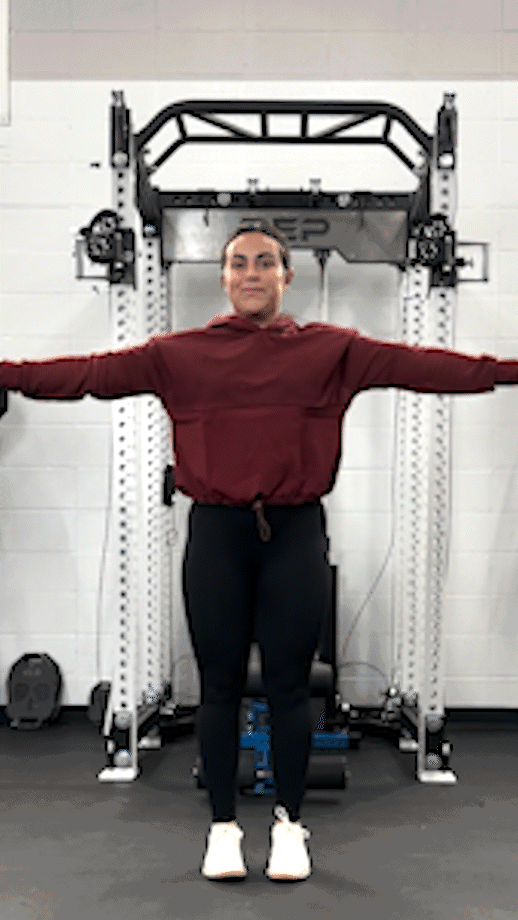
Burpees
Muscles Targeted: Quads, glutes, calves, hip flexors, deltoids, chest, and triceps
How to Do It:
- Stand tall and squat down until both hands are on the ground.
- Then push your hands on the floor and kick your legs backward until you’re in the push-up plank position.
- Perform a rapid push-up (optional) to make it a full-body exercise.
- Then bring your legs in, stand up, and perform a vertical jump.
- Repeat for either repetitions or time.
Trainer Tip: It is easy to get sloppy with burpees in the effort to do them quickly. Pay attention to your form and the position of your lower back.
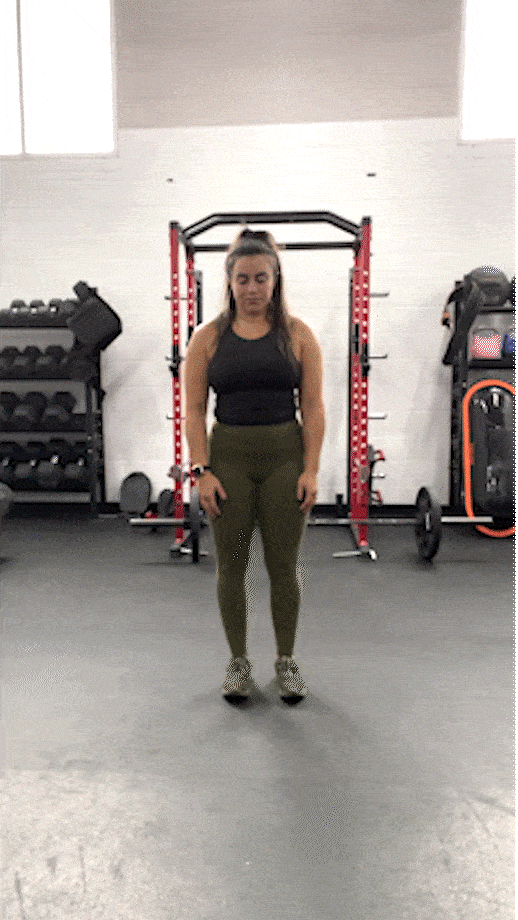
Clapping Push-ups
Muscles Targeted: Anterior deltoid, chest, and triceps
How to Do It:
- Start in the push-up position and keep your back straight from head to toe.
- Lower down until your chest is just above the floor.
- Explode up, so your hands leave the ground and perform a quick clap.
- Quickly get your hands to the ground and repeat.
Trainer Tip: Clapping push-ups are an advanced exercise and carry a risk of injury. It is best to avoid this variation if your hands cannot leave the ground during a regular plyo push-up.
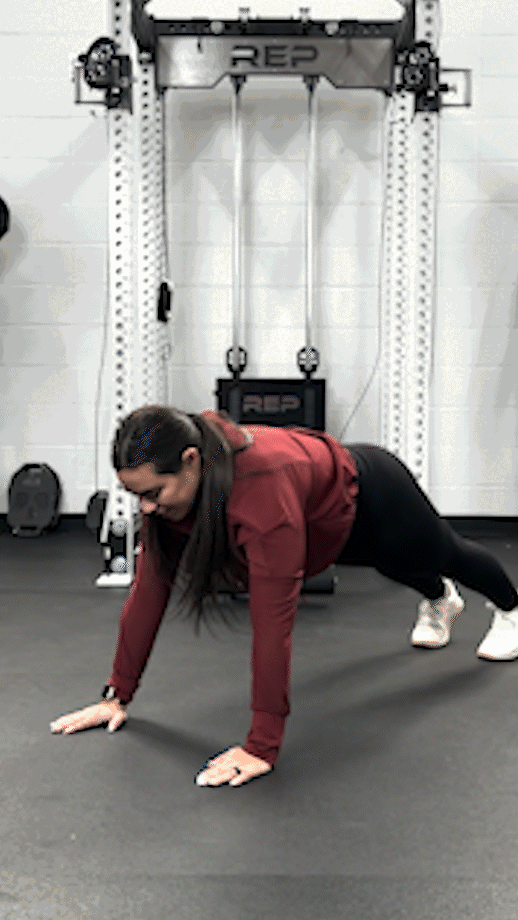
Plyometric Exercises: Q&A
What are five plyometric exercises?
Jump squats, jump lunges, medicine ball throw variations, box jump variations, and burpees.
What are plyometrics in exercise?
Plyometric exercise is any form of repeated, rapid stretch-shortening cycle to increase the muscle’s force and power output. An example is a jump squat, where you lower quickly into a squat and perform the concentric phase with a jump, land, and repeat.
What are the five main benefits of plyometric exercise?
The five benefits of plyometric exercises and how they will benefit your strength and performance in and out of the gym are:
1) Improved power
2) Better cardiovascular function
3) Strengthened fast-twitch muscle fibers
4) Better overall coordination
5) Increased training focus


